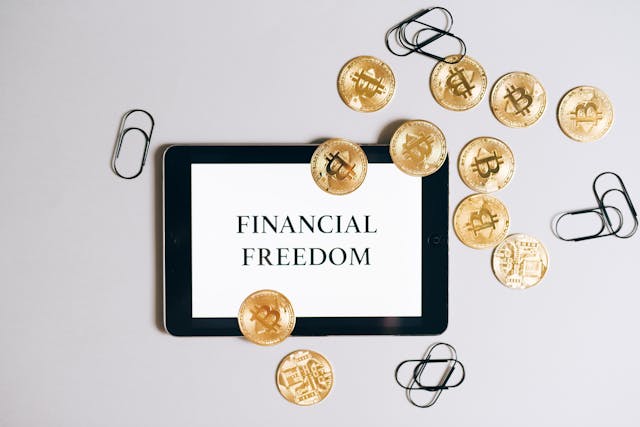Write Us: hello@ali5.org
Investing for Beginners Who Want Freedom, Not Just Returns
A beginner’s investing guide focused on building freedom, not just chasing returns. Learn smart, sustainable strategies that align with your lifestyle goals.

When people hear the word “investing,” the first thing that comes to mind is money. The goal of stocks, crypto, and real estate is the same: to make more money. But here’s what. It’s not just about numbers going up when you invest. It’s about making a life where you can decide how to spend your time.
This article is for you if you want more than just returns. You want to be free from bad jobs, money worries, and the 9-to-5 trap.
Let’s break it down.
Why Most People Get Investing Wrong
The traditional approach to investing sounds something like this:
-
Work 40+ years
-
Set aside 10% of your income
-
Hope for 7% annual returns
-
Retire at 65
But what if you’re not trying to retire old? What if you want more choices in your 30s or 40sor even sooner?
That’s where the mindset shift happens. Investing shouldn’t just be about getting rich. It should be about buying your time back.
The Real Goal: Buying Freedom
When you invest with freedom in mind, you’re playing a different game. Your goal isn’t just to have a big number in your bank account. It’s to reach a point where your money works hard enough that you don’t have to.
Imagine:
-
Taking a month off without asking anyone’s permission
-
Saying no to toxic clients because you don’t need the money
-
Working fewer hours while still covering your lifestyle
That’s financial freedom. Not someday. Sooner than you think if you start right.
Step 1: Know Your “Enough” Number
This is the most underrated step in beginner investing. Before diving into stocks or funds, get clear on your freedom number, the amount you need to cover your basic lifestyle without working full time.
Let’s say you need $2,000/month to live comfortably.
Now ask: How much money would I need invested to generate that passively?
Using a 4% withdrawal rate (a common rule in FIRE Financial Independence, Retire Early), you’d need about $600,000 invested.
That number might sound big, but you don’t need to reach it overnight. The point is to work backward from your freedom goal.
Step 2: Learn the Basics (No Jargon Needed)
You don’t need to be a finance expert to start investing smartly. Here’s the bare minimum you should know:
1. Index Funds
Index funds let you invest in the whole market instead of trying to pick the next Amazon. They are cheap, spread out, and have been reliable in the past. Think about ETFs for the S&P 500.
2. Dollar-Cost Averaging
No matter what the market is doing, put a set amount of money in every month (for example, $200). This makes the highs and lows more even over time.
3. Compound Interest
The earlier you start, the more your money grows without extra effort. A $10K investment growing at 8% annually becomes over $100K in 30 years. Magic? Nopejust math.
4. Keep Fees Low
Avoid high-fee funds or advisors unless they offer serious value. A 1% fee might sound small, but it can cost you six figures over decades.
Step 3: Automate and Ignore the Noise
The best investors? They’re often the ones who do the least.
-
Set up automatic transfers to your investment account.
-
Stick with your plan.
-
Ignore headlines, Twitter panic, and “hot stock” tips from your cousin.
The market goes up and down. Your job is to stay in the game long enough for it to pay off.
Step 4: Invest in Multiple Forms of Freedom
Just one part is money. You can only be truly free when you invest in everything:
1. Skills
Learn skills that can earn you income on your terms. Freelancing, coding, content creation, or e-commercewhatever gives you leverage.
2. Time
Cut back on unnecessary spending to free up time now. Downsizing your lifestyle isn’t a sacrifice, it’s a strategy.
3. Relationships
Build a support system. Nothing eats freedom faster than toxic people or environments. Choose community wisely.
4. Health
What’s the point of retiring rich if you’re too tired to enjoy it? Exercise, sleep, and eat like your future depends on it because it does.
Real-Life Example: Jamie’s Story
Jamie, 28, works in digital marketing. She doesn’t make six figures, but here’s what she does do:
-
Lives below her means and saves 40% of her income
-
Invests monthly in index funds
-
Built a small freelance income stream on the side
-
Avoids lifestyle inflation when she gets raises
In just 5 years, she’s on track to reach Coast FIwhere she could stop saving entirely, and her investments would still grow enough for retirement.
Jamie’s not waiting until 65. She’s designing her life around what matters nowtravel, creativity, and time with family.
Mistakes Beginners Should Avoid
Let’s keep you from learning the hard way.
-
Chasing hype: Don’t dump money into crypto or meme stocks unless you’ve already covered your basics.
-
Trying to time the market: No one can do it consistently, not even the pros.
-
Ignoring taxes: Learn how capital gains and dividends are taxed in your country.
-
Going all in on one thing: Don’t put every dollar into one stock, property, or idea. Diversify.
Where to Start Today (No Overthinking)
-
Open a low-fee investment account (like Vanguard, Fidelity, or your local brokerage).
-
Choose a simple index fund or ETF (like VTI, SPY, or your country’s equivalent).
-
Set up an automatic monthly contribution $50; is a solid start.
-
Track your net worth once a month. Don’t obsess.
And that’s it.
Final Thoughts: Don’t Just Invest for ReturnsInvest for Options
Money by itself isn’t freedom. But money that works for you? That opens doors.
-
The door to work less.
-
The door to say no.
-
The door to live on your terms.
You don’t have to be rich to feel free. You just need enough on your terms.
So, if you’re just starting, keep it simple, be consistent, and stay focused on the bigger goal: designing a life that feels like yours.







